
Architractile is a leading manufacturer of tensile pavilion architecture and pavilion tensile fabric structures in India. With a team of skilled and experienced professionals, we provide high-quality and cost-effective solutions for a range of architectural projects.
Tensile pavilion architecture is an innovative and versatile approach to building design that involves the use of lightweight and flexible materials such as PVC-coated polyester fabric and steel cables. This approach allows for the creation of large, open spaces without the need for traditional building materials such as concrete and steel.
Pavilion tensile fabric structures are a popular choice for a range of applications, including outdoor events, sports facilities, and public spaces. They offer a range of benefits, including their durability, versatility, and cost-effectiveness. They are also highly customizable, making them an ideal choice for architects and designers looking to create unique and visually striking designs.
At Architractile, we specialize in the design, manufacture, and installation of pavilion tensile fabric structures. Our team has years of experience in the industry and a deep understanding of the latest technologies and materials. We work closely with our clients to understand their specific needs and requirements, and we use this information to develop tailored solutions that meet their unique needs.
One of the key benefits of pavilion tensile fabric structures is their ability to provide shade and shelter in outdoor spaces. This makes them an ideal choice for outdoor events such as concerts, festivals, and sporting events. They can also be used to create covered walkways, outdoor dining areas, and other types of public spaces.
Another benefit of pavilion tensile fabric structures is their ability to create unique and visually striking designs. They can be customized in a range of colors and patterns, and their flexible nature allows for the creation of complex shapes and forms. This makes them an ideal choice for architects and designers looking to create innovative and eye-catching designs.
At Architractile, we use the latest technologies and materials to manufacture our pavilion tensile fabric structures. Our fabrics are made from high-quality PVC coated polyester, which is both durable and weather-resistant. We also use high-strength steel cables and other components to ensure that our structures are strong and long-lasting.
In addition to our pavilion tensile fabric structures, we also offer a range of other architectural products and solutions. These include tensile membrane structures, tensile canopy structures, and tensile shade structures. We work closely with our clients to understand their specific needs and requirements, and we use this information to develop tailored solutions that meet their unique needs.
Overall, pavilion tensile fabric structures offer a range of benefits for a range of architectural applications. They are lightweight, flexible, and highly customizable, making them an ideal choice for architects and designers looking to create unique and visually striking designs. With the expertise and experience of the team at Architractile, we are confident that we can provide high-quality and cost-effective solutions for a range of architectural projects.
When it comes to designing a tensile pavilion for a stadium, there are a few key factors to consider. These include the size and shape of the stadium, the location of the pavilion, and the specific needs and requirements of the client.
One popular design option for a tensile pavilion stadium is a curved or arched roof. This type of design provides a large, open space that can be used for a range of purposes, including outdoor events, concerts, and sports games. The curved shape also allows for better air circulation, which is important for outdoor venues.
Another design option for a tensile pavilion stadium is a dome-shaped roof. This type of design is ideal for stadiums that require a large, covered space for events and activities. The dome shape provides a unique and visually striking design that can be customized in a range of colors and patterns.
In addition to the roof design, the shape of the pavilion itself is also important. Many tensile pavilions for stadiums are designed with a rectangular or square shape, which provides a large, open space that can be used for a range of activities. Other shapes, such as circular or triangular, can also be used to create a unique and visually interesting design.
When designing a tensile pavilion for a stadium, it is important to consider the location of the pavilion. This includes factors such as the surrounding landscape, the orientation of the sun, and the prevailing winds. By taking these factors into account, designers can create a pavilion that provides the best possible experience for spectators and attendees.
Overall, the design and shape of a tensile pavilion stadium will depend on a range of factors, including the specific needs and requirements of the client, the size and shape of the stadium, and the location of the pavilion. By working closely with a team of experienced designers and architects, clients can create a pavilion that is both functional and visually striking, and that provides a unique and memorable experience for all who attend.
The type of fabric used in tensile fabric pavilion structures can vary depending on the specific needs and requirements of the project. However, there are a few common types of fabrics that are often used in tensile structures:
1. PVC-coated polyester: This is one of the most common fabrics used in tensile structures. It is a woven polyester fabric that is coated with a layer of PVC (polyvinyl chloride) on one or both sides. This fabric is known for its durability, resistance to weather and UV rays, and ability to be printed with high-quality graphics.
2. PTFE-coated fiberglass: This is a high-performance fabric that is often used in large-scale tensile structures. It is made of woven fiberglass that is coated with PTFE (polytetrafluoroethylene), which is a non-stick, high-temperature resistant material. This fabric is lightweight, durable, and has excellent resistance to fire, UV rays, and chemicals.
3. ETFE foil: This is a lightweight and translucent material that is often used in tensile structures that require a high degree of transparency. ETFE (ethylene tetrafluoroethylene) foil is a type of fluoropolymer that is known for its high strength, resistance to weather and UV rays, and ability to self-clean.
4. HDPE mesh: This is a breathable and lightweight fabric that is often used in tensile structures that require a high degree of ventilation. HDPE (high-density polyethylene) mesh is a type of knitted fabric that is made of synthetic fibers. It is known for its durability, resistance to weather and UV rays, and ability to provide shade while still allowing air to flow through.
Overall, the choice of fabric will depend on a range of factors, including the specific needs and requirements of the project, the location and climate of the site, and the design of the tensile structure.
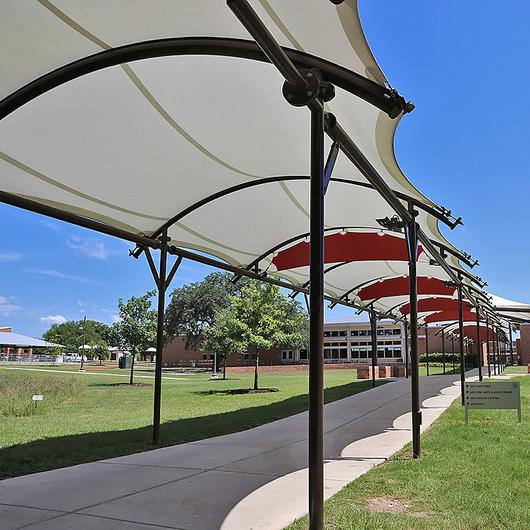 Walkway Structure
Walkway Structure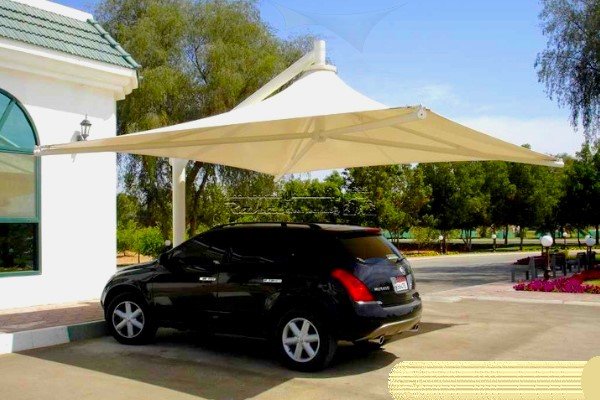 Tensile Umbrella
Tensile Umbrella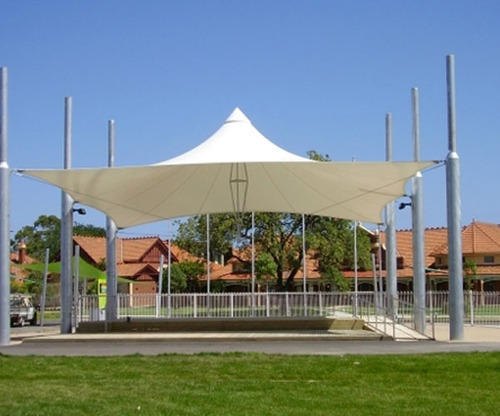 Tensile Gazebo
Tensile Gazebo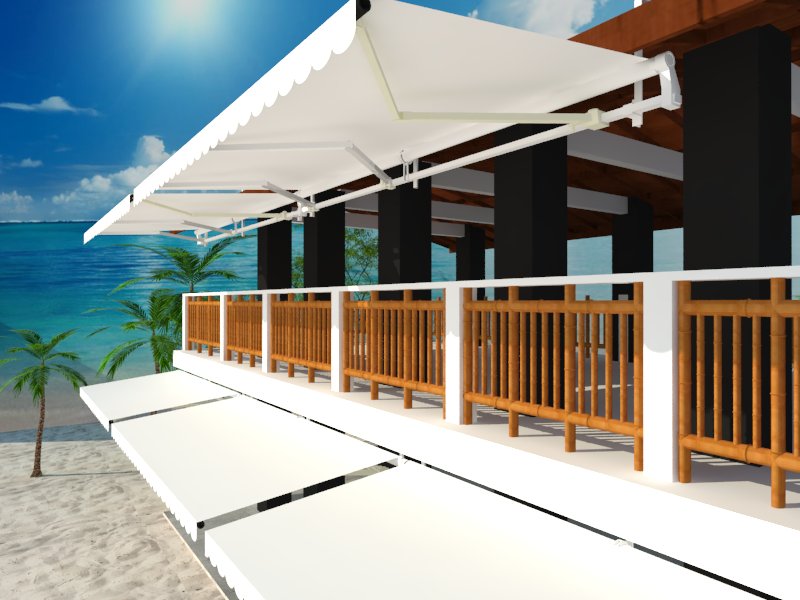 Awning Shade
Awning Shade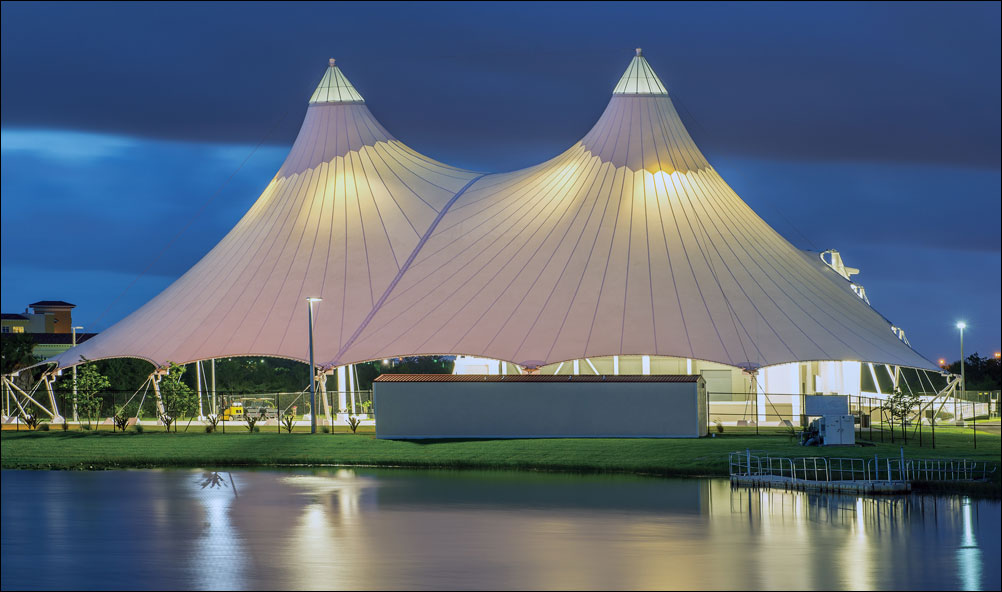 Tensile Structure
Tensile Structure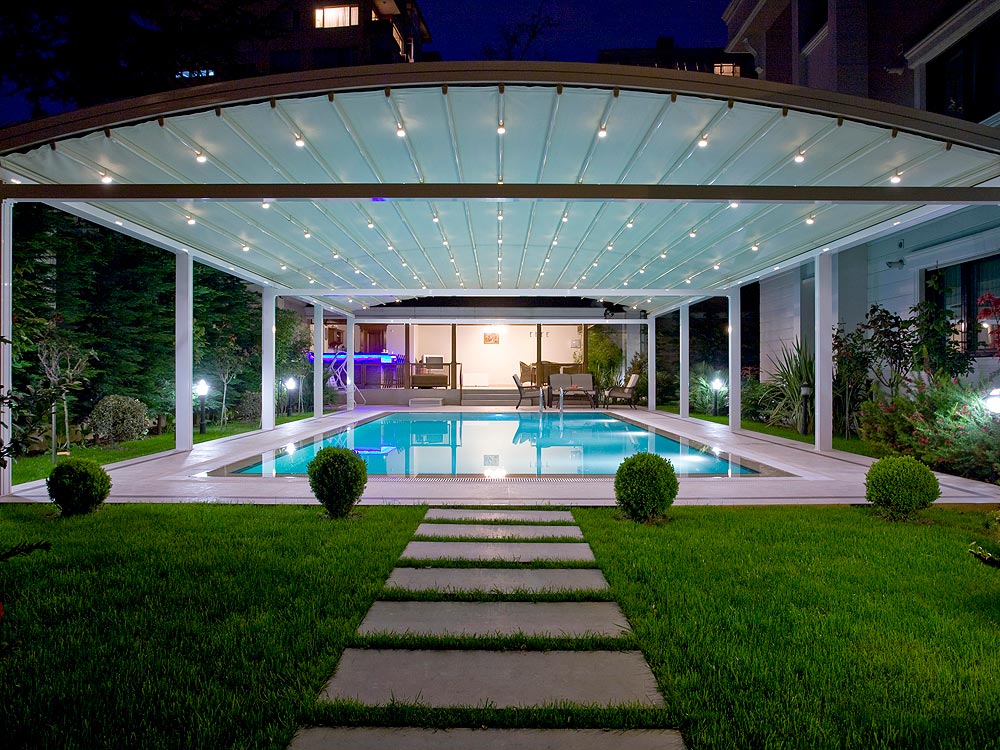 Swimming Pool Enclosures
Swimming Pool Enclosures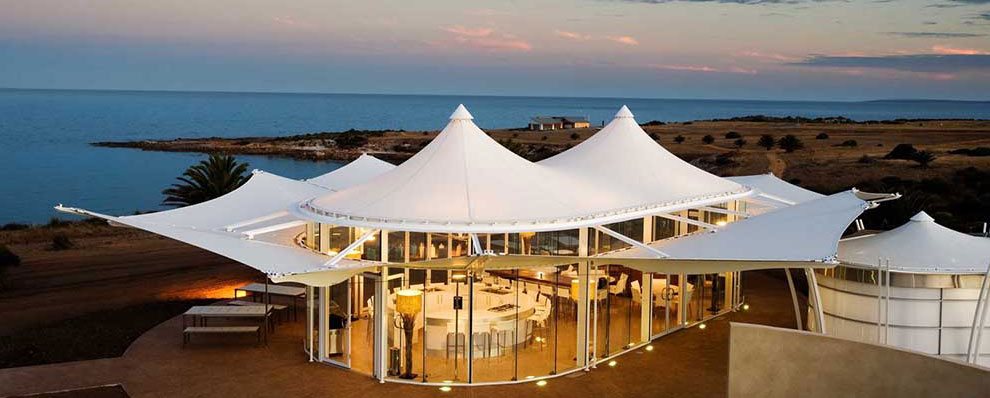 Tensile Roof Shade
Tensile Roof Shade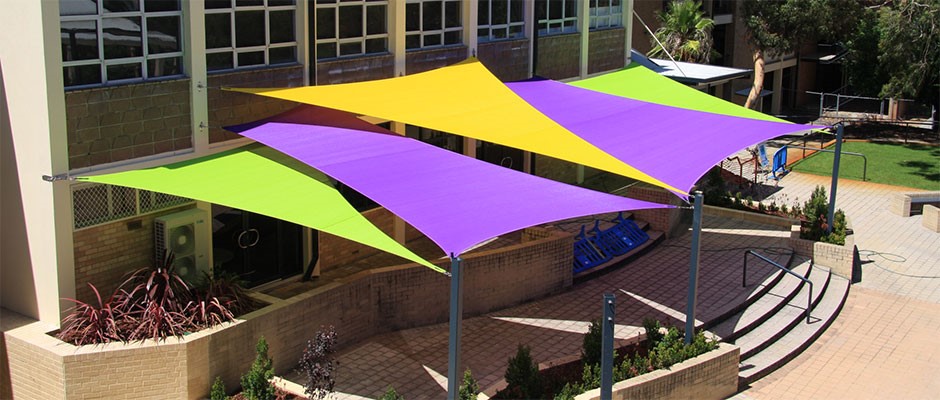 Shade Sail
Shade Sail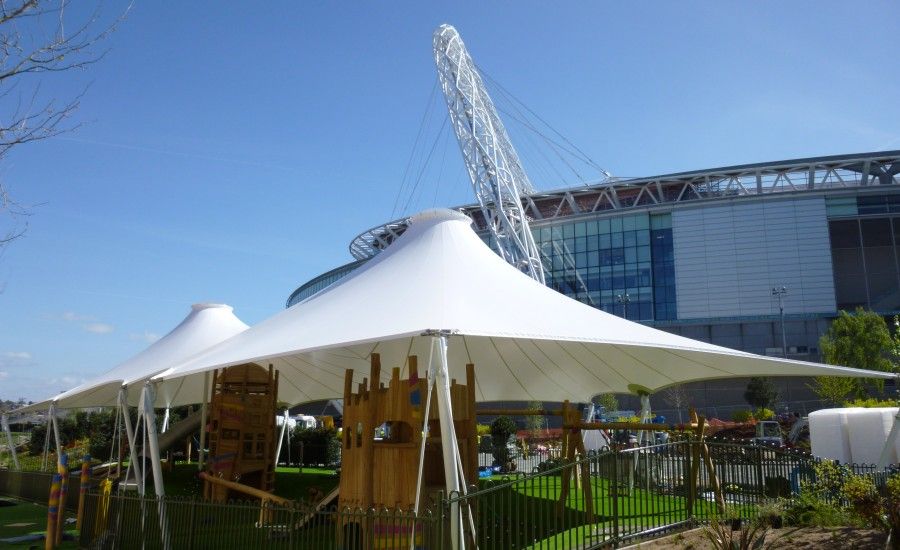 Architectural Umbrellas
Architectural Umbrellas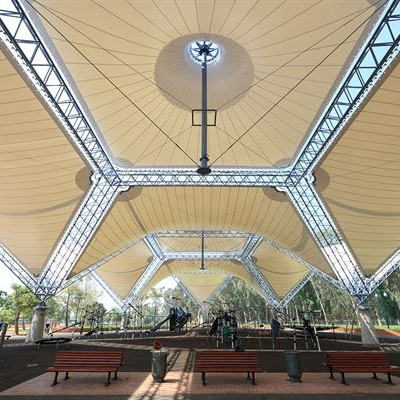 Auditorium Tensile Structure
Auditorium Tensile Structure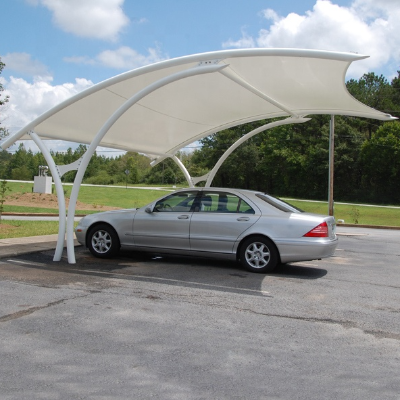 Tensile Car Parking
Tensile Car Parking Conical Tensile Structure
Conical Tensile Structure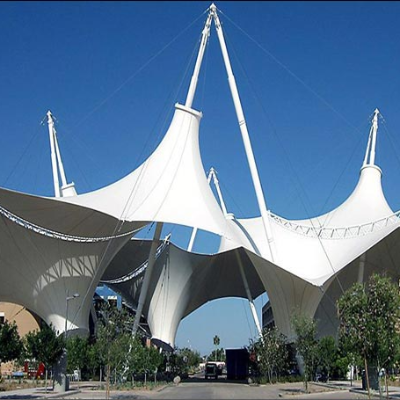 Modular Tensile Structure
Modular Tensile Structure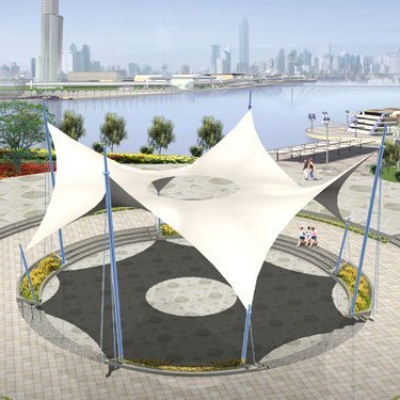 Outdoor Tensile Structures
Outdoor Tensile Structures Swimming Pool Tensile Structure
Swimming Pool Tensile Structure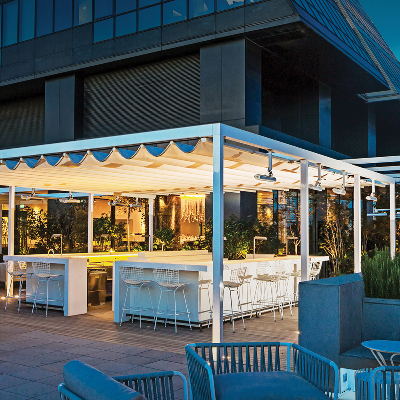 Retractable Roof
Retractable Roof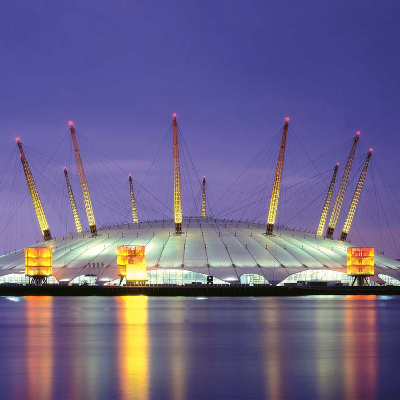 Tensile Architecture
Tensile Architecture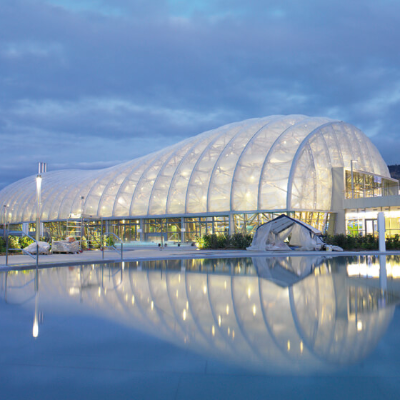 Tensile Membrane Structure
Tensile Membrane Structure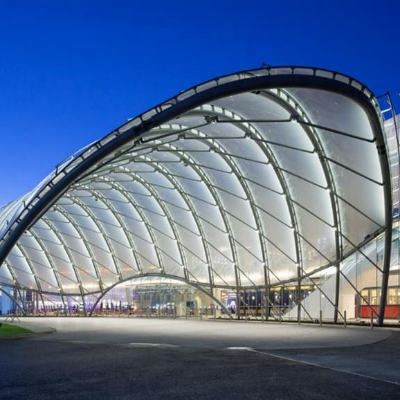 Tensile Roof
Tensile Roof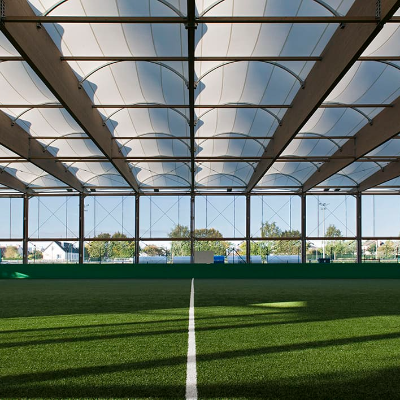 Fabric Roof
Fabric Roof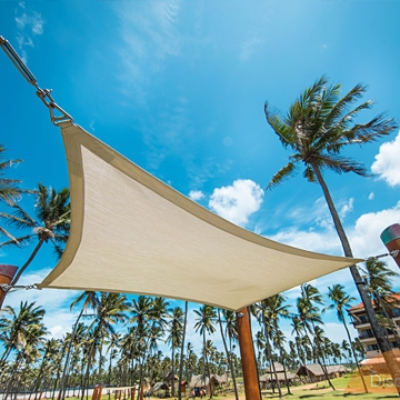 Hyper Tensile Structure
Hyper Tensile Structure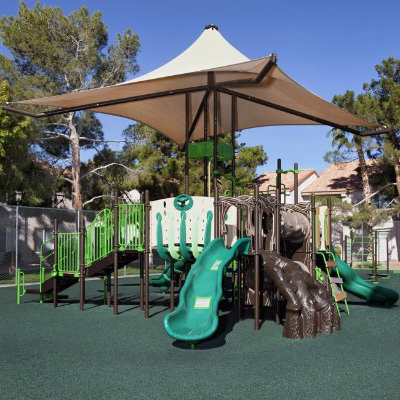 Playground Canopies
Playground Canopies Tensile Canopy
Tensile Canopy Tensile Fabric Structure
Tensile Fabric Structure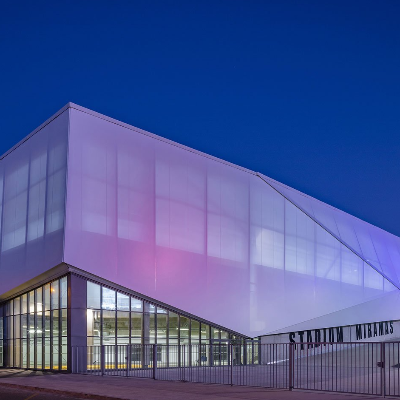 Tensile Facade
Tensile Facade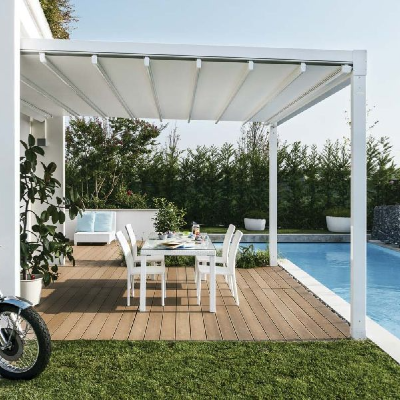 Tensile Pergola
Tensile Pergola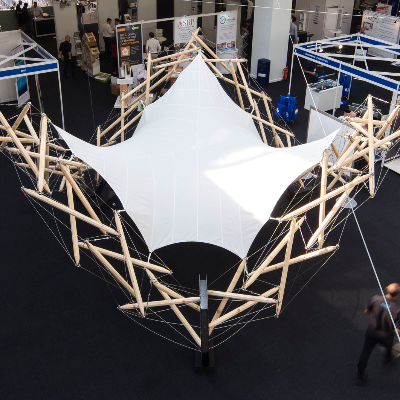 Tension Fabric Structure
Tension Fabric Structure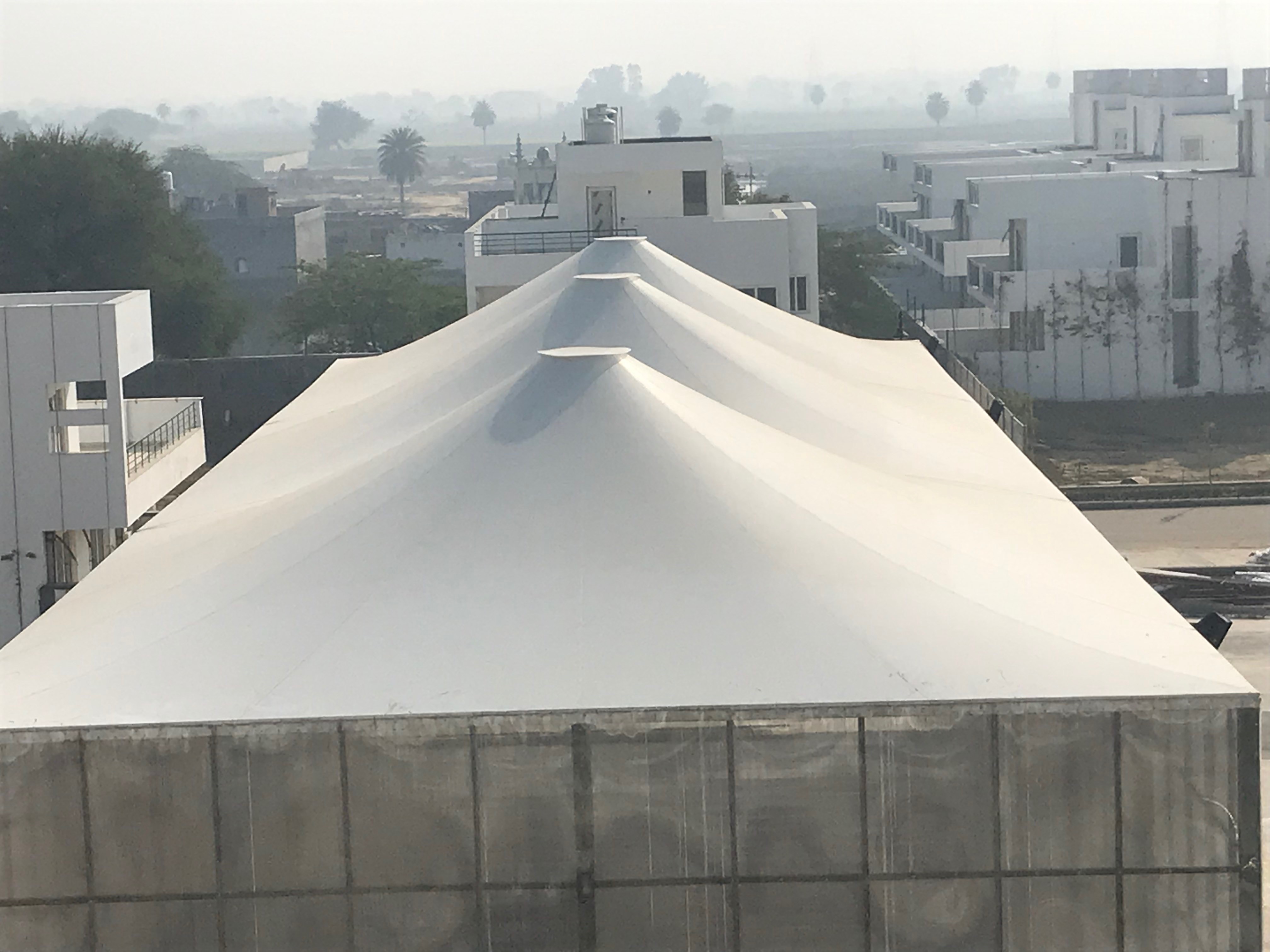 Badminton Court Tensile Structure
Badminton Court Tensile Structure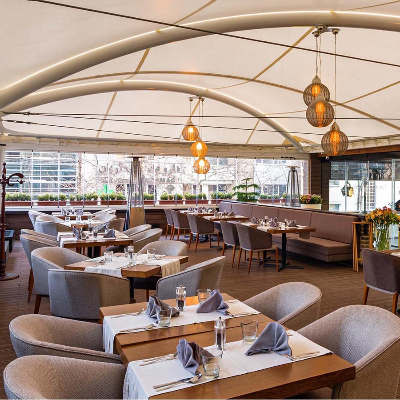 Restaurants Tensile Structure
Restaurants Tensile Structure Cantilever Tensile Structure
Cantilever Tensile Structure Inverted Umbrella Tensile Structure
Inverted Umbrella Tensile Structure Amphitheater Tensile Structure
Amphitheater Tensile Structure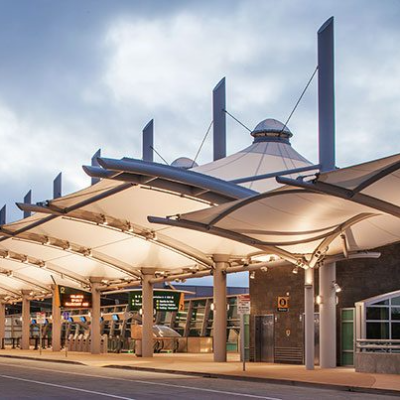 Airport Tensile Structure
Airport Tensile Structure Tensile Shelter
Tensile Shelter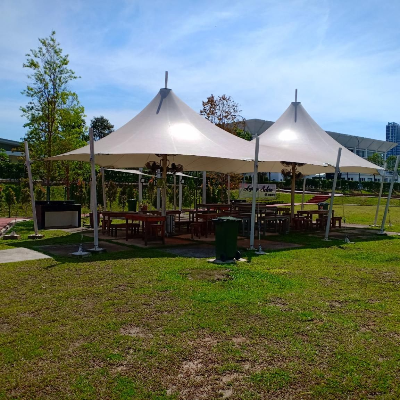 Lawn Tensile Structure
Lawn Tensile Structure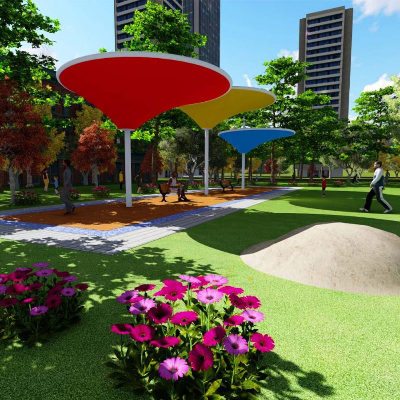 Garden Tensile Structure
Garden Tensile Structure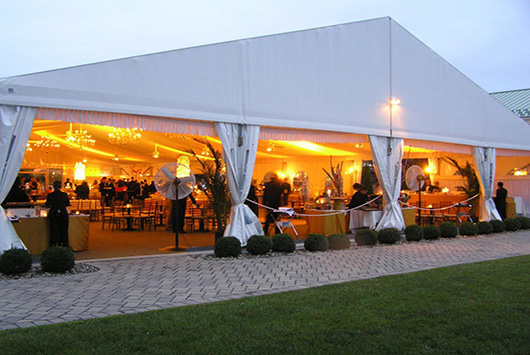 Marriage Hall Tensile Structure
Marriage Hall Tensile Structure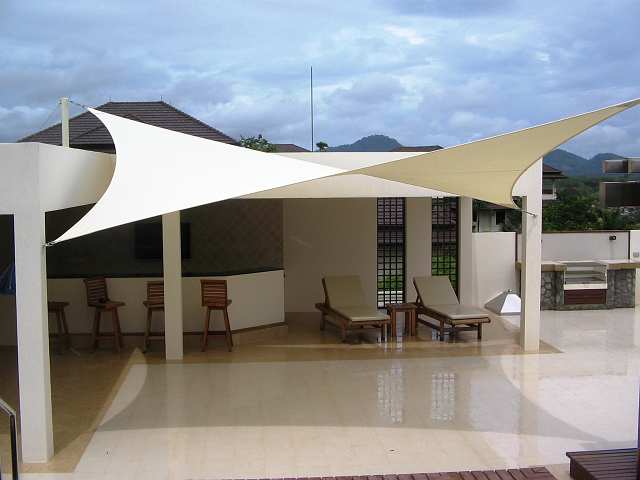 Terrace Tensile Structure
Terrace Tensile Structure House Tensile Structure
House Tensile Structure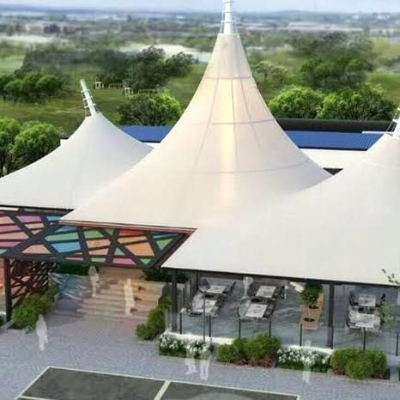 Roofing Tensile Structure
Roofing Tensile Structure Tensile Structure for Building
Tensile Structure for Building Tensile Structure for Parking
Tensile Structure for Parking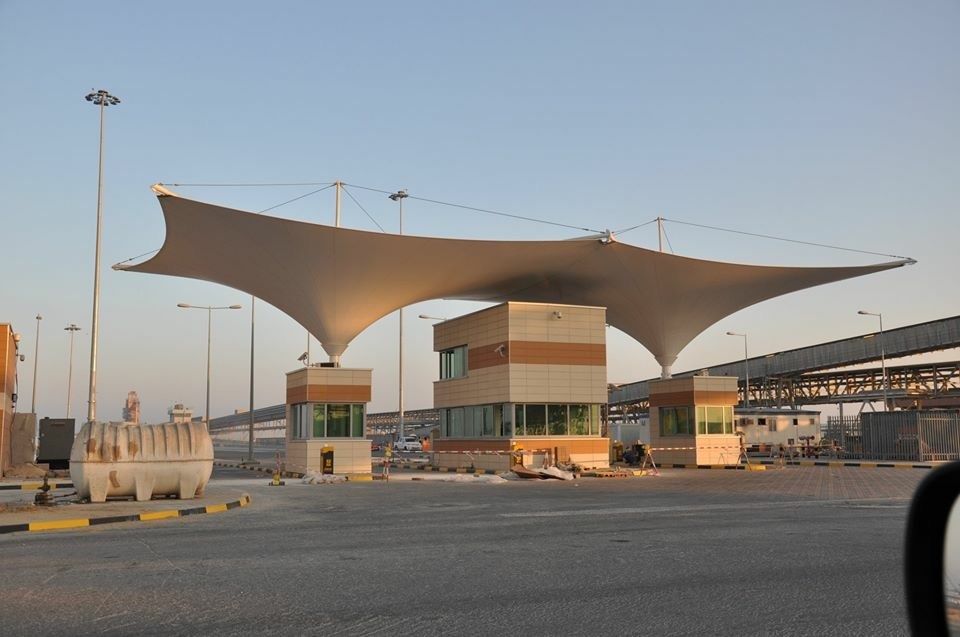 Tensile Structure for Entrance Canopy
Tensile Structure for Entrance Canopy Tensile Structure for Public Spaces
Tensile Structure for Public Spaces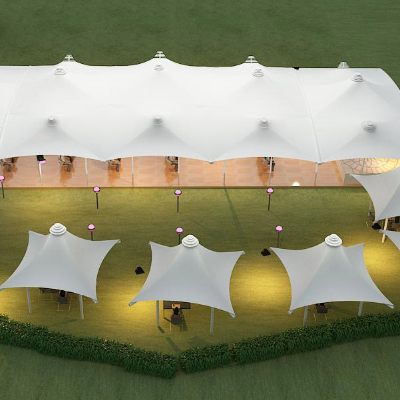 Tensile Structure for Banquet
Tensile Structure for Banquet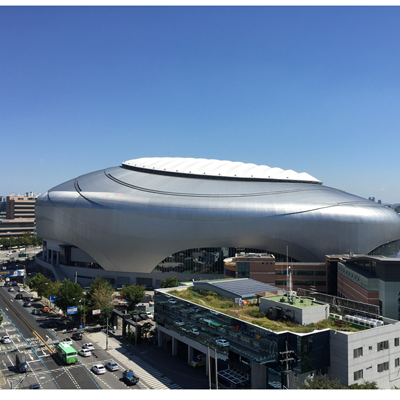 Anticlastic Structure
Anticlastic Structure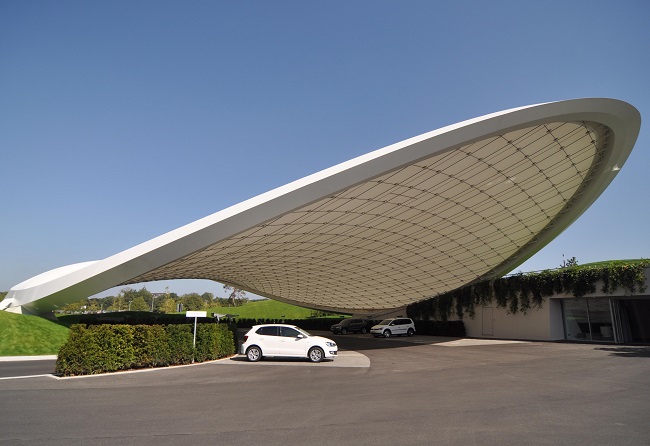 Synclastic Structure
Synclastic Structure Linear Tensile Structures
Linear Tensile Structures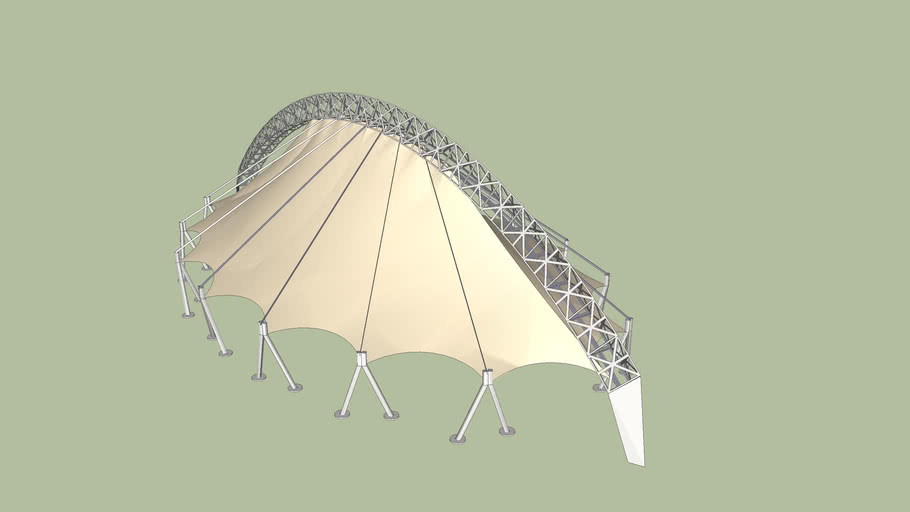 Three Dimensional Tensile Structures
Three Dimensional Tensile Structures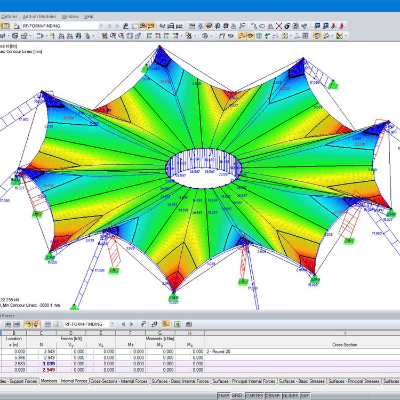 Surface Stressed Tensile Structures
Surface Stressed Tensile Structures Cable Net Membrane Structure
Cable Net Membrane Structure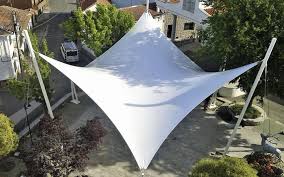 Hyperbolic Paraboloid Tensile Structure
Hyperbolic Paraboloid Tensile Structure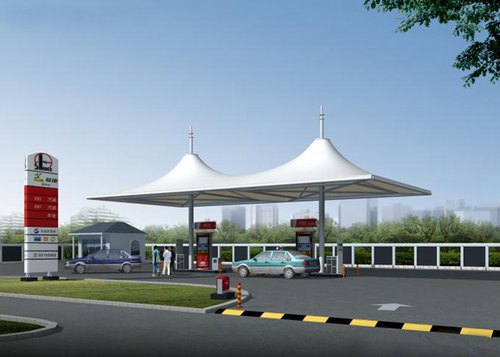 Petrol Pump Tensile Canopy
Petrol Pump Tensile Canopy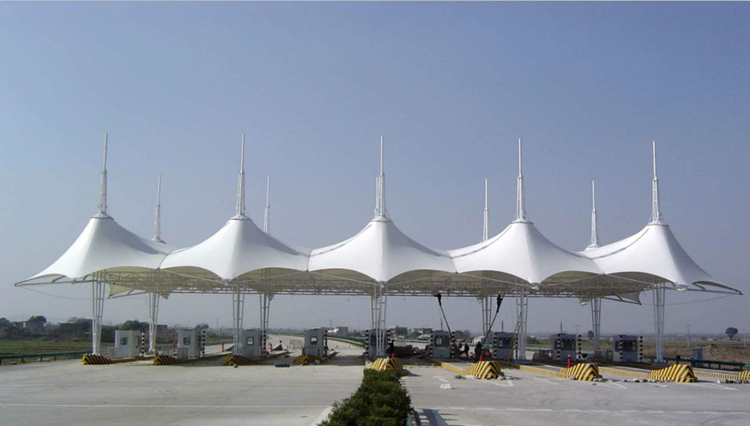 Toll Plaza Tensile Canopy
Toll Plaza Tensile Canopy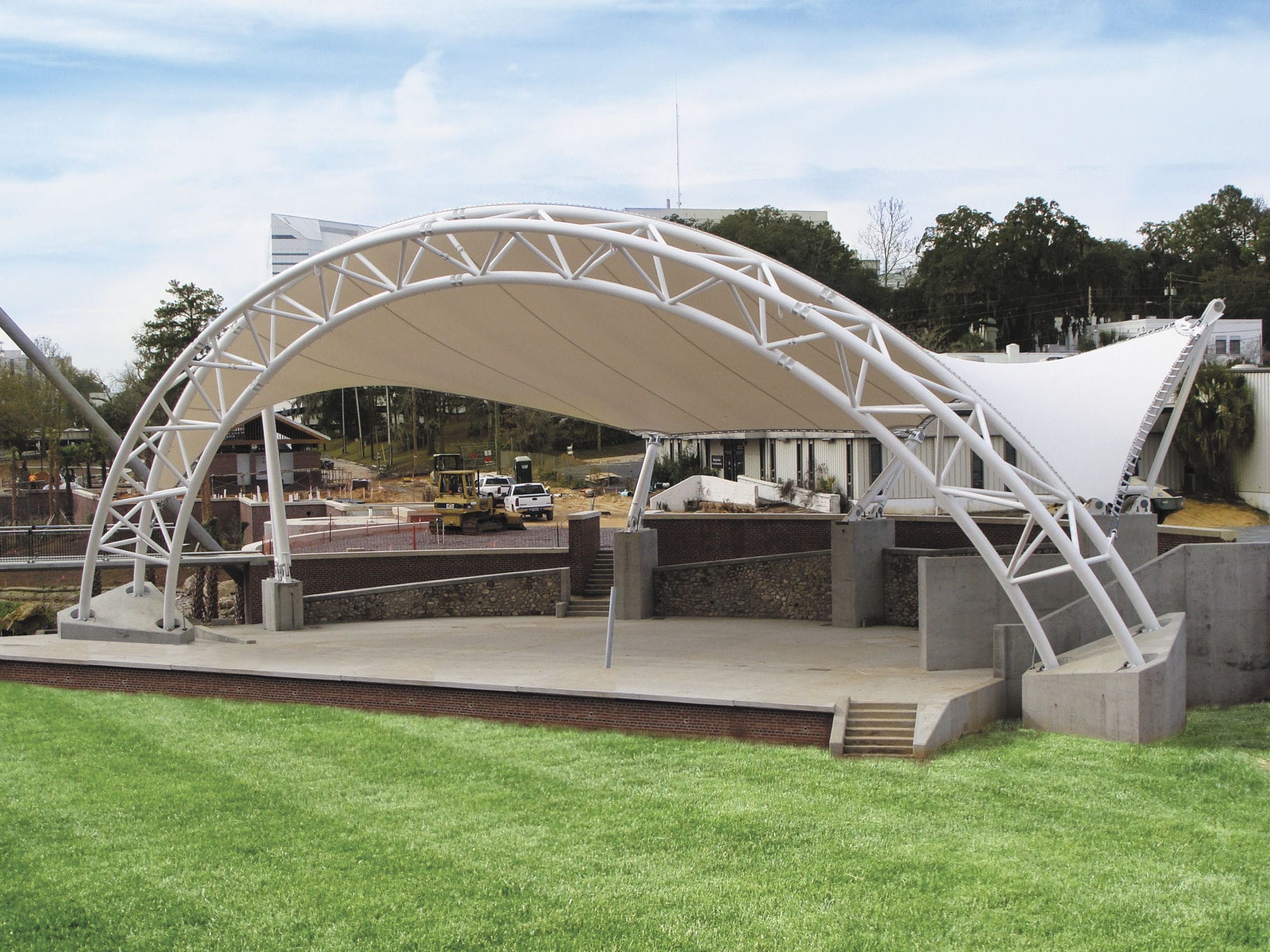 Arch Supported Tensile Structure
Arch Supported Tensile Structure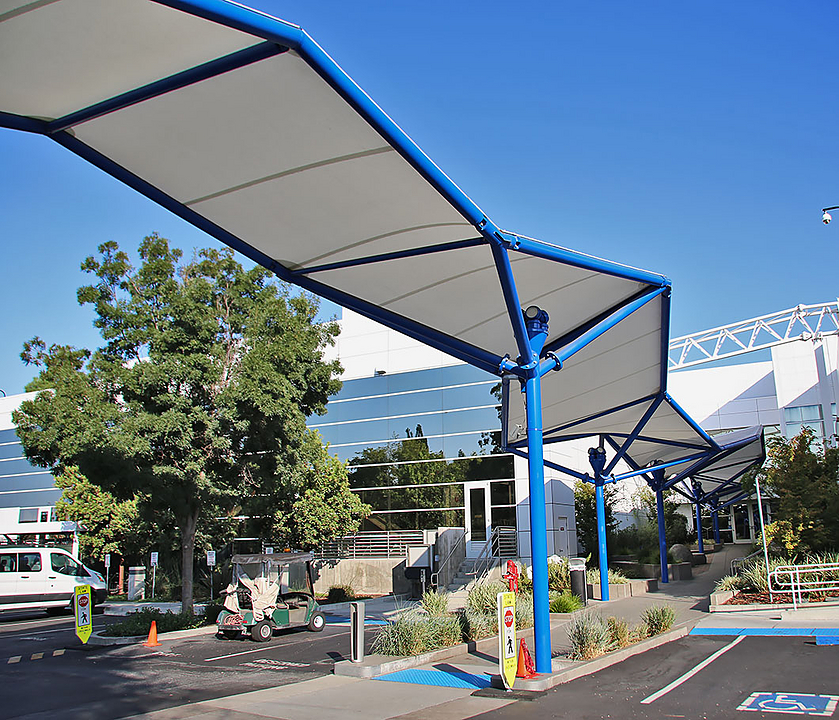 Barrel Roof Walkways
Barrel Roof Walkways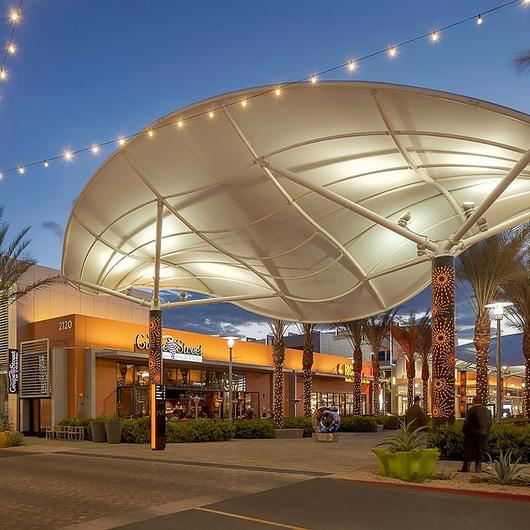 Canopy Membrane
Canopy Membrane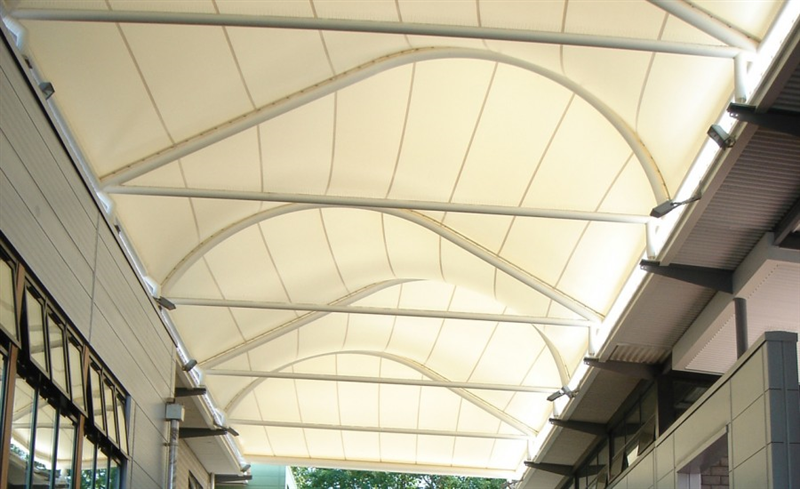 Atrium Tensile Architecture
Atrium Tensile Architecture School Tensile Structure
School Tensile Structure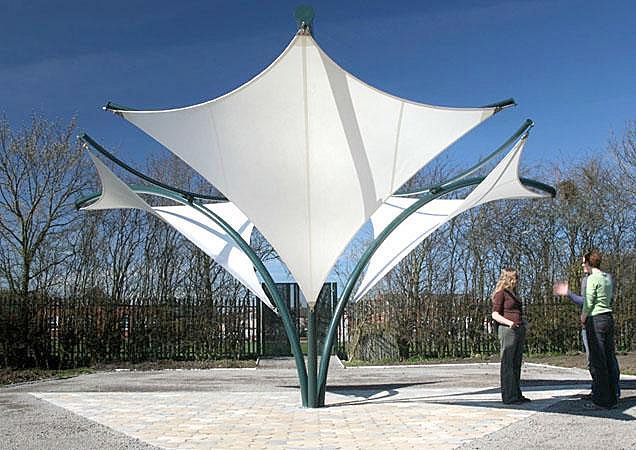 Tensile Landscape Structure
Tensile Landscape Structure Shell Structure
Shell Structure Interior Tensile
Interior Tensile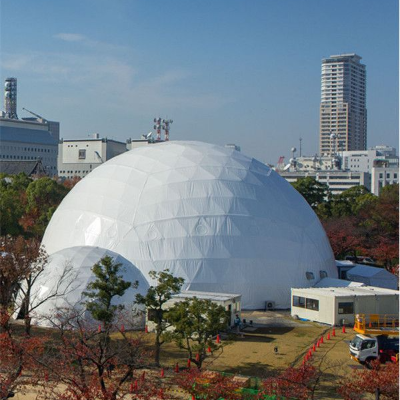 Tensile Dome
Tensile Dome Indoor Tensile Structure
Indoor Tensile Structure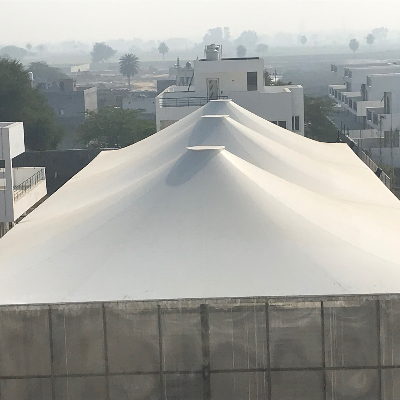 Tennis Court Tensile Roof Fabric Structure
Tennis Court Tensile Roof Fabric Structure Tensile Fabric False Ceiling and Stretch Ceiling
Tensile Fabric False Ceiling and Stretch Ceiling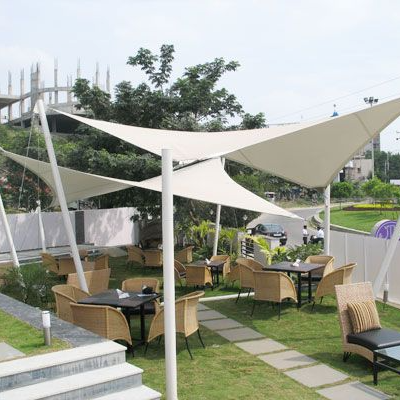 Tensile Structure Food Court
Tensile Structure Food Court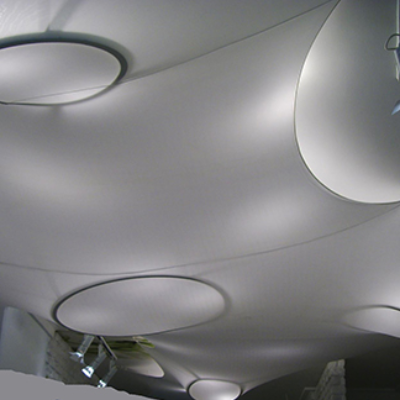 Tensile Stretch Ceiling
Tensile Stretch Ceiling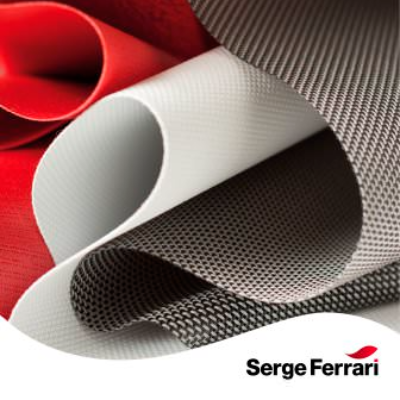 Serge Ferrari Fabric
Serge Ferrari Fabric Mehler Tensile Fabric
Mehler Tensile Fabric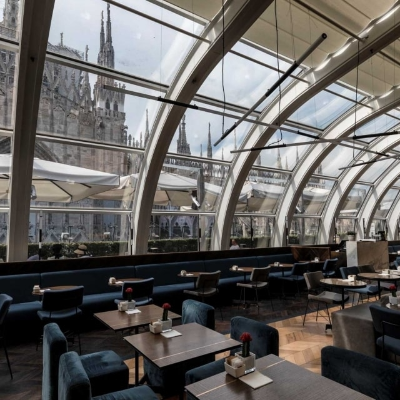 Acoustic Blinds
Acoustic Blinds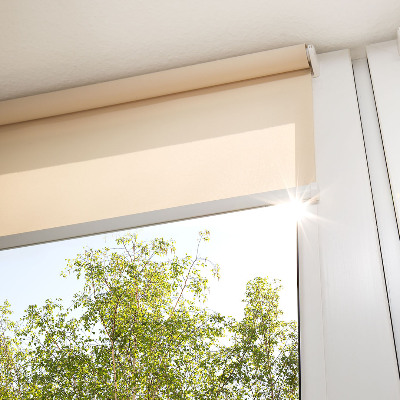 Roller Blinds
Roller Blinds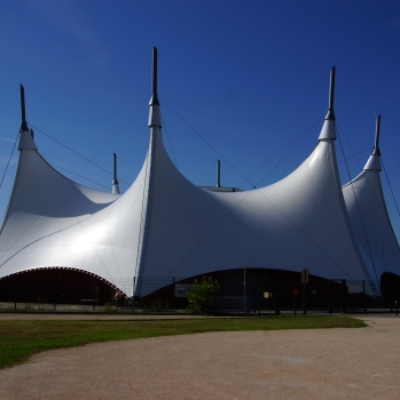 Mast Supported Tensile Structure
Mast Supported Tensile Structure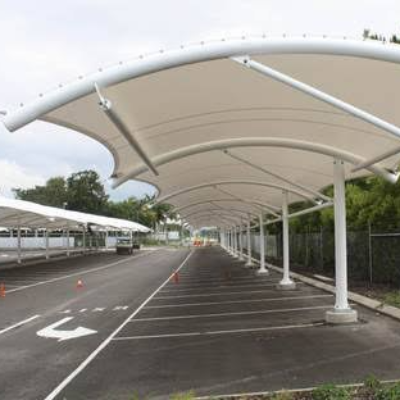 Barrel Vault Tensile Structure
Barrel Vault Tensile Structure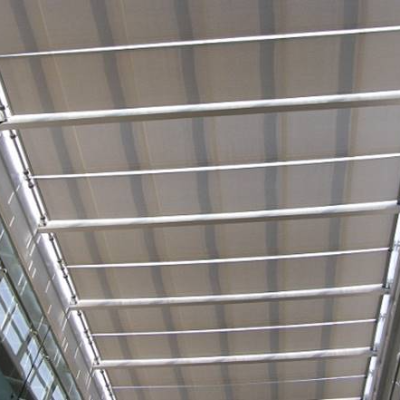 Parallel Tensile Structure
Parallel Tensile Structure